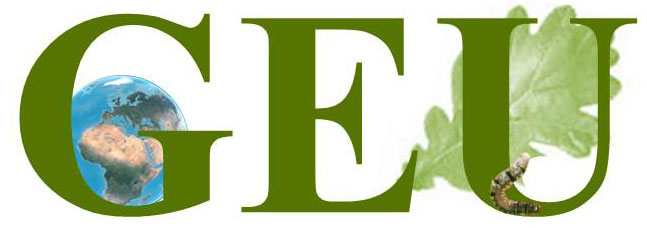
Mediterranean scrubland. Source: Joaquim F. P. a Flickr.
A study published this week in the renowned journal Nature shows clear signs of destabilizing carbon uptake by land ecosystems in large regions of the world. In particular, the difference between the CO2 taken up and the CO2 released into the atmosphere in these regions increasingly differs across years, with high plant productivity (and high carbon sequestration) in some years and low plant productivity (and low sequestration) in others. The study’s authors warn that such increasing variability indicates a risk of ecosystems becoming destabilized, spiralling away from their current situation and undergoing abrupt changes.
“We have not only detected an increase in variability in these areas, but also an increase in their ‘memory’ — temporal autocorrelation — which indicates that carbon uptake in one year is increasingly positively related to the previous year. A lower carbon uptake in one year is therefore becoming more likely to be followed by an even lower uptake the next year, ” says the study’s lead author, Marcos Fernández, researcher at CREAF and University of Antwerp “These are clear symptoms of a possible destabilization of the major ecosystems affected, something that might entail an abrupt change in the way they work and, in their landscapes,” he continues. “In Mediterranean ecosystems, for example, forests could become scrublands that are unable to turn back into forests in the current climate.”
The study confirms that that the areas most at risk of destabilization have less forest cover and more cropland, are warmer, and have experienced greater rises in temperature variability, which could be related to an increase in extreme weather events, such as heatwaves and cold snaps. These areas include the Mediterranean region, eastern Africa, the west coasts of North and Central America, India and Pakistan, and Southeast Asia.
To carry out the study, the research team worked with global net ecosystem production data for the 1981-2018 period from CAMS and CarboScope, two global atmospheric inversion models. They also used net ecosystem production data from TRENDY, an ensemble of 12 dynamic global vegetation models.
Instability constrains carbon sequestration
The study shows that carbon sequestration capacity has been compromised in the regions with the greatest potential for destabilization in recent years , whereas it has increased in areas where variability has declined, such as the Amazon and parts of central and northern Europe. “In the case of the Amazon, despite carbon having been lost on average over the study period, the losses are smaller and smaller because these systems have actually been increasing their carbon sequestration capacity,” explains CREAF-based CSIC research professor Josep Peñuelas.
“Being able to predict the carbon cycle is vital to combating climate change If their carbon uptake capacity declines, society will need to reduce their carbon emissions faster than is currently assumed” remarks CREAF researcher Jordi Sardans, another of the study’s authors. “While we do not yet know whether such abrupt changes will alter the climate or plants’ carbon sequestration capacity, a possible destabilization of large regions of the biosphere complicates making predictions because it greatly increases variability.”

Tropical forest at Brasil. Source: Toni Arnau (RUIDO photo).
Does greater biodiversity mean more stability?
The study found variability in carbon sequestration to be at its greatest in regions with intermediate biodivesity too.
In ecology, it is always said that the most biodiverse ecosystems, those with the greatest wealth and diversity of species, are the most stable and productive, giving them the highest carbon sequestration capacity. The study put that notion to the test in all the regions under analysis. The researchers found carbon sequestration rates to be highest in regions with intermediate biodiversity values, and lower in places with a very high level of biodiversity, such as the tropics.. According to the authors, this could be due to the positive effect that biodiversity has on decomposition and respiration, offsetting the positive effect of photosynthesis in tropical ecosystems, something that would not happen in other ecosystems. Additionally, and in contrast to what was previously thought, the study found variability in carbon sequestration to be at its greatest in regions with intermediate biodiversity too. Given the global scale of the study, it is very difficult to pinpoint the mechanisms that have given rise to its findings.
Led by CREAFand Antwerp University, the study was carried out by a team including scientists from the Spanish National Research Council CSIC, the University of Barcelona, the University of Paris-Saclay , (France), theInternational Institute for Applied Systems Analysis(Austria), University of Oxford(UK), the Max Planck Institute for Biogeochemistry, (Germany), the University of Exeter (UK), the Canadian Centre for Climate Modelling and Analysis (Canada), the University of Illinois (USA), the National Center for Atmospheric Research (USA), and the National Centre for Atmospheric Science (UK).
Article:
Fernández- Martínez M. Peñuelas J. Chevallier F, Ciais P, Obersteiner M, Rödenbeck C, Sardans J, Vicca S, Yang H, Sitch S, Friedlingstein P, Arora K, Goll D, K.Jain A,.Lombardozzi D, McGuire P, A.Janssens I, Diagnosing destabilization risk in global land carbon sinks. Nature DOI : 10.1038/s41586-023-05725-1 2021-11-17874
Source: https://blog.creaf.cat/en/noticias/carbon-sequestration-risk-destabilization-large-regions-world/
